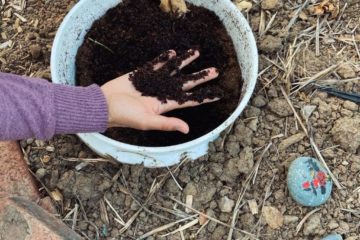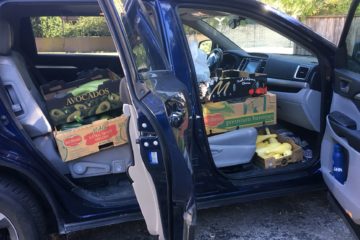Written by Anastasia Mathews, Non-Profit Management Intern
Sustainable agriculture has become a path to mitigate the effects of climate change within our food system and take care of our environment. While it might seem like a modern movement, many of the sustainable ideas aren’t new. They are based on ideas from Black, Indigenous, people of color (BIPOC).
What is Sustainable Agriculture?
According to University of California Agriculture and Natural Resources, Sustainable agriculture focuses not only on environmental impacts, but also social and economic ones.
Almost all regenerative and sustainable agricultural practices come from Black, Indigenous, people of color.
While those profiting off the agricultural industry in the United States are primarily white, many of the practices used within the sustainable agriculture movement come from Black, Indigenous, people of color. White people have taken over the regenerative farming movement even though it was really started by BIPOC. The Regenerative Agriculture Foundation states that “white landowners generate 98% of all farm-related income.”
BIPOC “See the movement as yet another attempt to rebrand age-old growing traditions and Indigenous practices that pre-date the “conventional” farming that regenerative agriculture advocates claim they are disrupting” (Wozniacka, 2021).
Contributions from BIPOC
- Indigenous Land Management When thinking about agriculture in this country, you cannot forget those who were stewards to the land long before colonial settlers came. “Native Americans actively managed and even constructed their natural landscapes” (Wozniacka, 2021). Indigenous peoples had complex agricultural systems that often used techniques such as intercropping and agroforestry to create incredibly productive systems while not depleting resources.
- Natural Nitrogen Fixation and Crop Rotation In the early 1900’s, Black scientist George Washington Carver worked on reviving African-Indigenous agricultural practices. “Dr. Carver is considered by many to be the father of modern regenerative agriculture in the U.S.” (Ojeda, 2021). He came up with methods of crop rotations and using legumes to help restore soil that had been depleted of resources by years of mono-cropping.
- Community Supported Agriculture (CSA) CSA in the United States as we know it today was originally introduced in the 60’s by a Black man named Booker T. Whatley. Dr. Whatley had a doctorate in horticulture and wanted to use direct marketing to help small farmers. He created “clientele membership clubs,” which are very similar to our modern CSAs, giving farmers capital to start the growing season (Espejo, 2021).
Food Insecurity disparately affects BIPOC Communities
While we owe many ‘modern’ sustainable practices to BIPOC, food insecurity still disparately affects BIPOC communities. In 2020, 24% of Black Americans were estimated to experience food insecurity (Feeding America). And according to American Progress, food insecurity is more than twice as likely to affect Black and Hispanic Households (2021).
The goal of the work we are doing at Each Green Corner is to combat food insecurity in our communities through sustainable agricultural practices.
Each Green Corner aims to connect communities back with their food system through urban and school gardens. Every other month, we have neighborhood harvest days, where volunteers harvest from backyards of community members who have excess produce. All the produce is donated to a local food bank. Each Green Corner also hosts a stand twice a month at the San Carlos Farmers’ Market where shoppers can purchase and drop off produce that our volunteers will bring to the food bank.
Works Cited and Places to Learn More
Doval, C. (2018, December 11). What is Sustainable Agriculture? Sustainable Agriculture Research & Education Program. https://sarep.ucdavis.edu/sustainable-ag
Espejo, E. (2021, October 25). CSA’s and regenerative agriculture’s ties to Black history. One Earth. https://www.oneearth.org/csas-and-regenerative-agricultures-ties-to-black-history
Feeding America. (n.d.). Food Insecurity in Black Communities | Feeding America. Retrieved February 13, 2022, from https://www.feedingamerica.org/hunger-in-america/african-american
Haider, A., & Roque, L. (2021, September 29). New Poverty and Food Insecurity Data Illustrate Persistent Racial Inequities. Center for American Progress. https://www.americanprogress.org/article/new-poverty-food-insecurity-data-illustrate-persistent-racial-inequities/
History of Organic Farming in the United States. (n.d.). SARE. Retrieved February 13, 2022, from https://www.sare.org/publications/transitioning-to-organic-production/history-of-organic-farming-in-the-united-states/
Ojeda, V. (2021, February 2). Honoring Black History Month • Slow Food USA. Slow Food USA. https://slowfoodusa.org/honoring-black-history-month/
Racial Diversity in Agriculture | Alternative Farming Systems Information Center | NAL | USDA. (n.d.). Retrieved February 13, 2022, from https://www.nal.usda.gov/legacy/afsic/racial-diversity-agriculture
Resources – SOUL FIRE FARM. (n.d.). Retrieved February 13, 2022, from https://www.soulfirefarm.org/resources/
Restorying Regenerative Agriculture. (2021, October 15). Regenerative Agriculture Foundation. https://regenerativeagriculturefoundation.org/restorying-regenerative-agriculture/
Wozniacka, G. (2021, January 5). Does Regenerative Agriculture Have a Race Problem? Civil Eats. https://civileats.com/2021/01/05/does-regenerative-agriculture-have-a-race-problem/



0 Comments